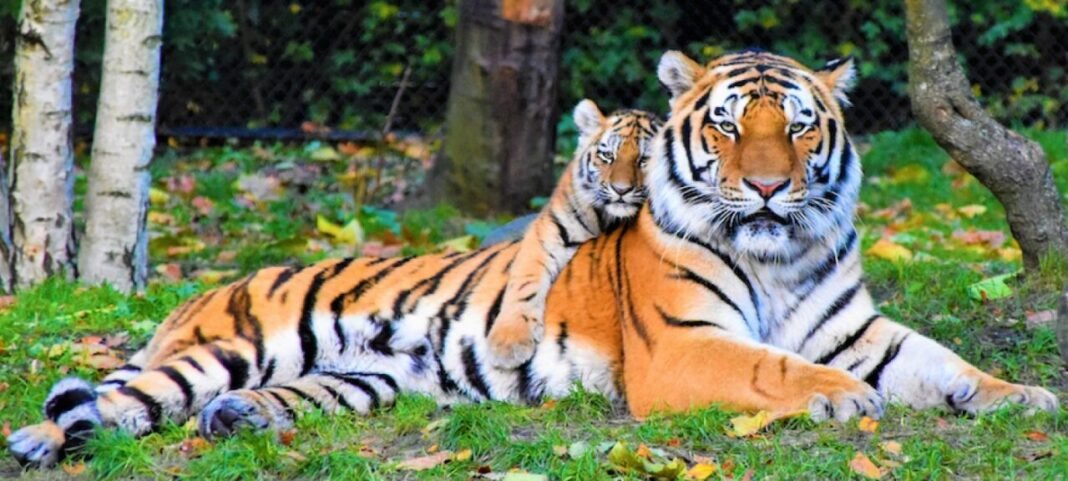By: Vinod Chandrashekhar Dixit
World Tiger Day is celebrated every year on July 29th as a way to raise awareness about this magnificent but endangered big cat. Don’t we think hunting and killing of animals has become a form of recreation. Murdering humans is considered a crime. But killing and wiping out an entire genre is hardly given consideration. Like forests, wildlife is also a national resource, which not only helps us in maintaining the ecological balance but is also beneficial from economic, recreational and aesthetic points of view. It was a time when human interference was minimum the number of wild animals was quite high and there was no problem of their protection or conservation. But, with the expansion of agriculture, settlement, industrial and other developmental activities and mainly due to greed of man, the number of wild animals are gradually decreasing day by day. We must understand that the wildlife is a precious gift God has given to this planet. The term ‘wildlife’ not only caters to wild animals but also takes into account all undomesticated lifeforms including birds, insects, plants, fungi and even microscopic organisms. For maintaining a healthy ecological balance on this earth, animals, plants and marine species are as important as humans. Hunting has tradition and the support of very powerful people on its side and with their influence hunting has been left untouched by legislation – the Protection of Animals Act only covers captive and domestic animals. High officials, who are supposed to be the guardians of law, often abuse their powers to shield the rich and powerful.
Our country is unique in having a significant number of tigers in the wild, in spite of growing population and resource extraction pressures on their habitat. Tigers are the heritage of our country, evoked in the Vedas, Puranas and many other literatures for their unparalleled strength and aesthetic beauty. India is home to a third of the global tiger population and according to National Tiger Conservation Authority, there are an estimated 2967 tigers left in India in 2021. The tiger population is rapidly declining because of many reasons. Tiger deaths increased to 127 in 2021 from 106 in 2020. And this is the highest number of annual deaths recorded in a decade, beating the record of 2016 when 121 tiger deaths were recorded in the Indian forests. The number of tiger deaths in 2019 was 96.
The destruction of forest coverage by Maoists may be one of the reasons for this decrease. Wild animal’s deaths were also reported from Andhra Pradesh, Assam, Kerala, Karnataka and Uttarakhand. No doubt, the world wild life Fund is the international agency, which is doing commendable work in promoting the protection of wildlife and there are number of national agencies engaged in the conservation of wildlife. According to research, the average life span of the tigers in the wild is generally 10-12 years and in natural ecosystem, factors like old age, diseases, internecine fights, electrocution, snaring, drowning, road, rail hits, among others, and a very high infant mortality observed in big cats, including tigers, account for majority of the tiger deaths. Madhya Pradesh leads the states in tiger numbers and, per the 2018 figures, counted 526 of the big cats within its territory. Karnataka was a close second with 524 tigers while Uttarakhand had the third-highest population of 444 tigers.
We should know that we are not just animals, but that we belong to the same family tree as other mammals, that our physiology and bodily processes are just like theirs, and that our mental processes too are from the same general pattern. The protection of the national animal has been a significant achievement till now. Hope this continues and leads to a significant rise in the coming years. Among animals, some are fewer in number than the others, If proper care and security are extended to them, the rare animals would survive. Only the future can tell whether national animal will survive to maintain the much-needed ecological balance. If we delay now, it might be too late.
Tigers play a large role in sustaining the biodiversity of forests, in maintaining healthy ecology, habitat conservation and the livelihoods of rural communities. The tiger population has decreased in the states of Telengana and Andhra Pradesh. The destruction of forest coverage by Maoists may be one of the reasons for this decrease. Wild tiger deaths were also reported from Andhra Pradesh, Assam, Kerala, Karnataka and Uttarakhand. During the first six months of the year, 30 deaths were reported. The protection of the national animal has been a significant achievement till now. Hope this continues and leads to a significant rise in the coming years. Credit must also be given to Aircel for initiating “Save Tiger” campaign, along with New Delhi Television (NDTV), who played an active role in creating awareness among the people on dwindling tiger population in India. A new Tiger commando force should be created to protect tigers from the poachers. Government must try to put in more efforts to improve the arrangements to conserve the national pride – the Tiger. (The author is a freelance journalist, writer & cartoonist. He can be reached at dixitpatrakar@yahoo.in)







